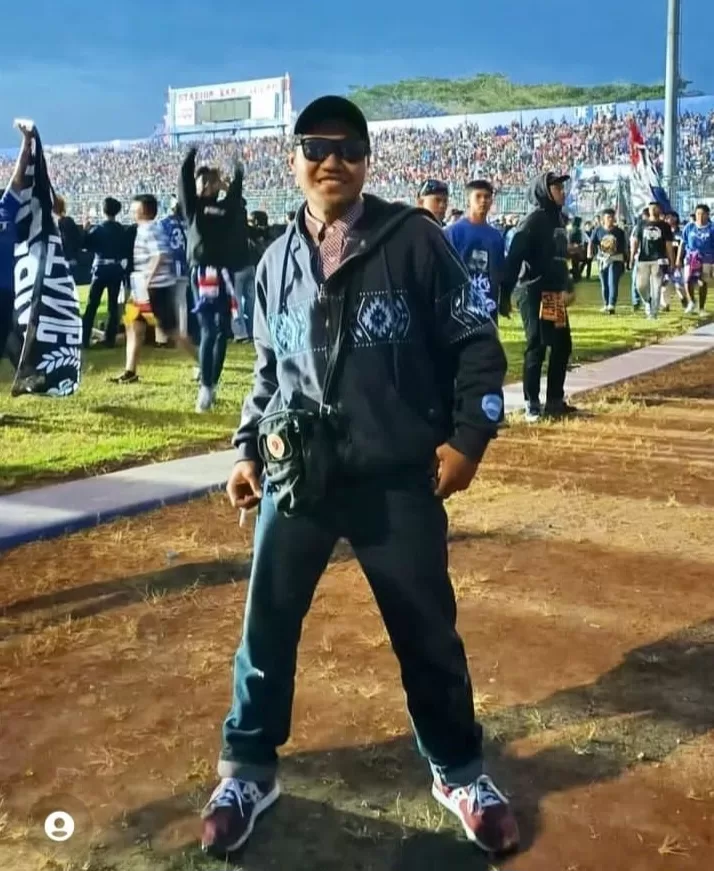But he would be wrong.
It was October 1, 2022, and his team, Arema FC, had just lost at home to their bitter rivals Persebaya Surabaya for the first time in 23 years.
In an effort to guard against the fan violence that frequently plagues Indonesian football, Persebaya supporters had been banned from attending the derby, but some 40,000 Arema fans had packed out the stadium and their howls of rage and disbelief greeted the final whistle.
“There were lots of emotions floating around that night,” Sandi, 31, told Al Jazeera. “We were disappointed with the score. When Arema played, we wanted them to win. It was a point of pride for all of us in the city of Malang.”
Supporters, in small groups at first, climbed down onto the field and ran towards their team in protest, some throwing punches at the players. Stewards in lime green vests scrambled to surround players and ushered them to safety of the tunnel and the dressing rooms.
By 9:45pm, six minutes after the final whistle, more than 100 supporters had poured onto the pitch and riot police began beating them back towards the tribunes at the south end of the stadium with batons and kicks. Many fans fell as they scrambled to climb over the metal barriers and back into the stands.
The police that night were also armed with tear gas, in contravention of FIFA rules prohibiting its use in stadiums. At about 9:50pm, the police fired their first volleys of tear gas and flash-bang grenades in the direction of the fans.
“It was just chaos,” Sandi said. “I saw people whose faces were blue from the lack of oxygen. People were fainting in the tribunes next to me.”
As Sandi’s eyes burned and struggled for breath, he fled to the highest point of the 10th tribune. He took off his t-shirt, soaked it in water, and wrapped it around his nose and mouth. “I stayed there for around half an hour, just waiting for the gas to clear,” he said.
Sandi was lucky; the gas was not as thick in the 10th tribune as it was in some others, such as the 13th.
Earlier that afternoon, 20-year-old Agus Rian Syah Pratama Putra had messaged his mother to say he was going to the game, and sent her a picture later that evening of him posing at the match in front of the 13th tribune.
“It made me laugh because he was standing in such an odd position with his legs spread apart,” his mother, Rini Hanifa, told Al Jazeera.
It was the last message she would ever receive from her son.

Even in a country as football-mad as Indonesia, Arema FC are renowned for the fanaticism of their support.
Such was Putra’s love of Arema, that he had been expelled twice from schools for skipping classes to attend games.
“He had moved to the city of Surabaya for work making children’s toys. It didn’t pay much, so he sold his shoes to buy tickets for the game,” Hanifa told Al Jazeera. “He came home just to watch the game. He had been going to Arema matches since he was in primary school, and he loved them so much.”
At about 11pm that night, Hanifa received a call from a nephew in Surabaya saying that he had heard there had been trouble at the match. By 1am, Rini had heard of dozens of people being killed inside the stadium.
In the dark of night, Rini and her husband went looking for their son. They found his body at a hospital in Malang.
“His face was black and looked like it had been burned by the gas,” she said. “Why didn’t the police just use water cannons? Why did they have to poison him?”.
According to an official report by Indonesia’s National Commission on Human Rights (Komnas HAM), an estimated 45 rounds of tear gas were fired inside the stadium and 135 people died from lack of oxygen caused by the gas and a crush as fans were caught in bottlenecks as they tried to flee the stadium’s exits.

Mobile phone footage shot from inside the exit gates showed that some of them were locked and some only partially opened, causing fans to scramble over one another to escape.
Children as young as three years old died in the arms of their parents as they desperately tried to carry them to safety.
It was the second-deadliest football stadium disaster worldwide; only the 1964 Estadio Nacional disaster in Peru – which killed 328 people – had a higher death toll.
Following the tragedy, the authorities pledged to reform Indonesian football, which – while enlivened by a vibrant fan culture – has long been marred by hooliganism, police violence, unsafe stadiums, mismanagement and corruption.
Meanwhile, investigative and legal processes have also been playing out.

A year on from the tragedy, Malang is still deeply in mourning.
The presence of those who died at Kanjuruhan Stadium is everywhere in Malang; in the banners strung across the city that bear their faces, in the graffiti scrawled on the sides of buildings, and in the local consciousness, cloaking the city in grief.
Many fans also feel they have been denied justice; only five people were brought to trial and given short sentences for their parts in the tragedy.
The anniversary poses questions, for Indonesian football and beyond, about how a club recovers from such a tragedy, what Arema’s future holds; about justice for the fans and the families of the victims.
And whether Indonesia football is being reformed so that nothing like this happens again.
